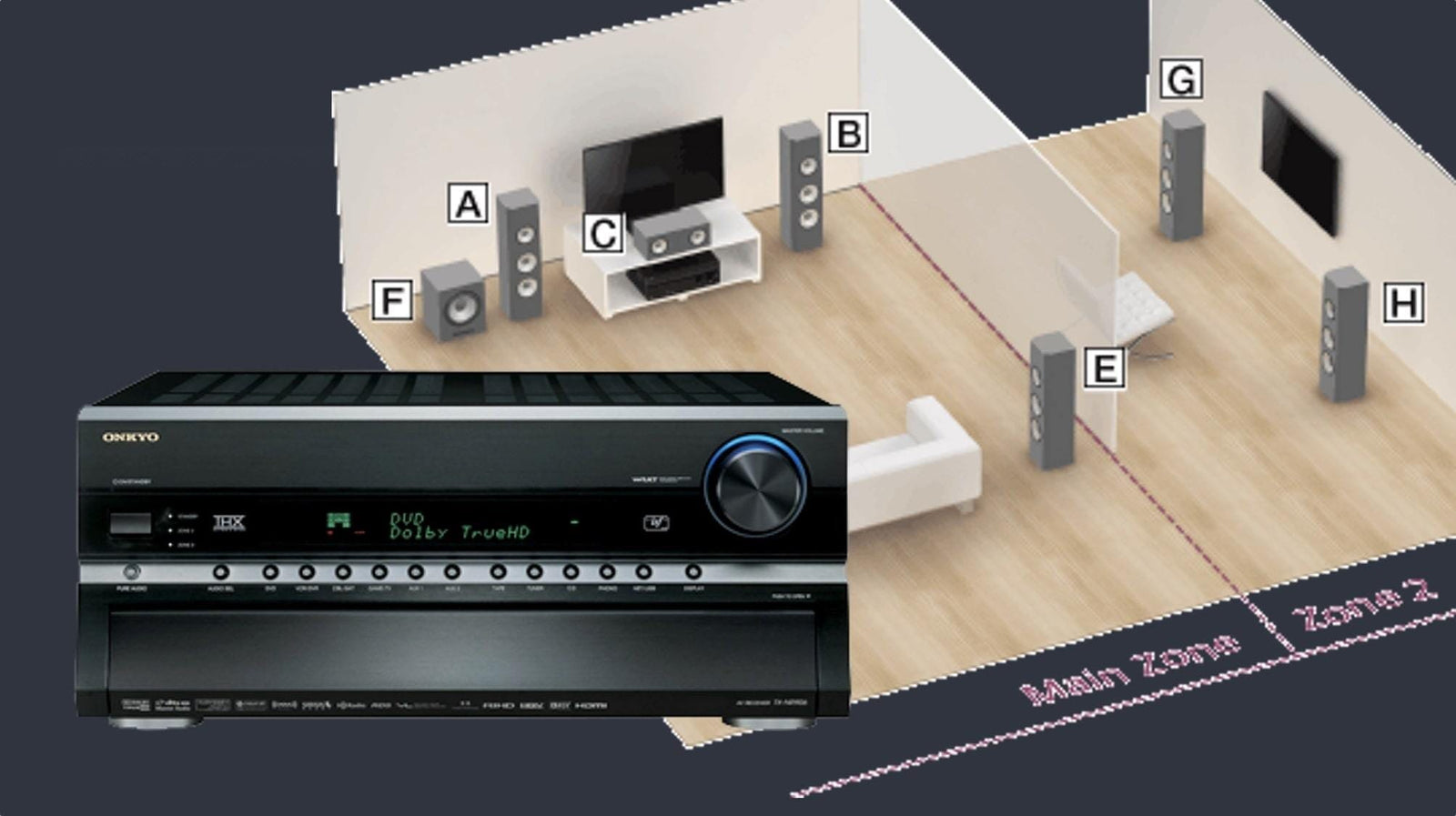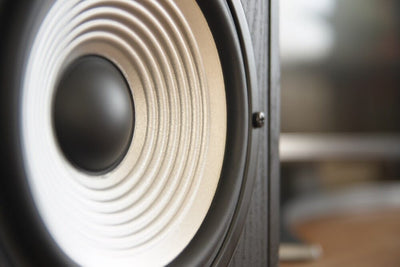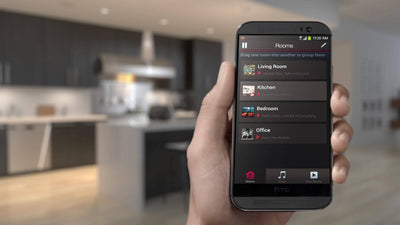AV Receivers have a few tricks up their sleeves, and with the right knowledge you can expand their capabilities by adding additional rooms at a relatively low cost.
This can be achieved by using the "Zone 2" function found on most AV receivers including Denon & Onkyo
Most high end AV Receivers have a zone 2 function, some even have a zone 2 and a zone 3 but what does it mean and how does it work?
This guide will cover all the basics, but please double check the specific make and model of AV Receiver to ensure it offers the features you're looking for.
You're welcome to contact our expert team for further advice too by email, live chat or calling 02393 190955.
Zone 2 Basics

Image Source: SONY
What Is A Zone?
Firstly let's start by explaining what a zone is.
Let's say for instance you have a living room with a TV, your AV Receiver and some surround sound speakers.
This would be classed as a "zone" as it's an area where you have speakers and will be listening to music or watching TV/movies.
Now imagine that your living room backs onto your kitchen and you want some ceiling speakers in there, this would be classed as a separate "zone" hence the Zone 2.
What Can Zone 2 Do?
Zone 2 will usually have the ability to play whatever the main zone is playing, and in some cases you can play a separate source.
For example you can watch TV in the living room zone in surround sound whilst playing the radio in the kitchen (zone 2).
App controlled systems like Denon HEOS are great for this as you can easily control each area separately from the free iOS/Android app.
Whilst the kids are playing Playstation on the big screen you can easily stream Spotify in the kitchen.
Zone 2 Limitations
Generally we'd suggest keeping the zone 2 near the main zone, so usually it's complimentary rooms such as lounge + dining room or lounge + kitchen etc. where you are likely to get both rooms playing the same music at the same time.
Our go to AV Receiver with a zone 2 option is the Denon HEOS range which gives a lot more control over your music and sources.
With the app you can use both zones separately, or sync them together at the same time however you only have one internet music streamer, so you can't listen to different Spotify tracks in both zones for instance.
You can watch a movie in the main zone and Spotify in the sub-zone though.
You also need to take into account your home cinema setup, a 7.1 channel AV receiver can handle 5.1 in the main zone and 2.0 in the sub-zone.
If you're planning a bigger 7.2.4 system in the cinema then you may want to look at a separate WiFi amplifier for the second zone instead. Whilst it'll cost more, you'll get more functionality.

Image Source: ONKYO
Zone 2 Application Exampls
Living Room + Dining Room
With the AV Receiver in the living room connected to your television and surround sound system you can add a second pair of ceiling/wall mounted speakers in the dining room for background music or TV audio.
Simply connect a pair of speakers to the zone 2 terminals of a compatible AV receiver.
Living Room + Kitchen
This is a popular choice, with the AV Receiver in the living room connected to your television and surround sound system you can add a second pair of ceiling/wall mounted speakers in your kitchen for background music or TV audio.
Simply connect a pair of speakers to the zone 2 terminals of a compatible AV receiver.
Kitchen + Patio
Another great idea is using your AV Receiver to power outdoor patio speakers.
This is especially great with the Denon HEOS as you can control it via WiFi app making it really easy to use.
With the AV receiver in your living room connected to your television and surround sound system, add some passive outdoor speakers to your zone 2 terminals of a compatible AV receiver.
Surround Sound + Stereo
Another common use is for two channel HiFi fanatics, you can have your surround sound system for TV's and movies but a secondary stereo pair of HiFi speakers connected to Zone 2 but within the same room for general music playback.
In this instance we'd recommend only using Zone 2 separately, not playing both zones at the same time.

Speaker Level vs Line Out
Speaker Level Zone 2
Most 7.1+ AV Receivers have the capabilities of driving a second zone directly without the need for an additional amplifier.
You can simply wire another set of speakers to your AVR.
Usually these will be connected to the "surround left" and "surround right" terminals, then in the AV receiver settings you'll need to enable the Zone 2 setting.
Please check your AV Receiver manual for model specific setup.
This is the most common way of adding a zone 2 to your AV Receiver.
Line Out Zone 2 / 3
You'll also find line outputs marked Zone 2, and sometimes Zone 3 depending on your AV receiver.
For these you'll need to wire to a separate stereo amplifier, sound will then be output from your AV Receiver into the second amplifier which will then connect to your speakers.
For this you can use either powered ceiling speakers or a slave amplifier connected to passive speakers. There's a more detailed guide to stereo amplifiers available here.
Final Thoughts
Hopefully you now understand what Zone 2 is and how it can be both beneficial and also cost-saving.
You'll find a Zone 2 on most modern AV receivers, and even on some stereo amplifiers.
If you have any further questions please feel free to contact our expert team by email, live chat or phone on 02393 190955.





